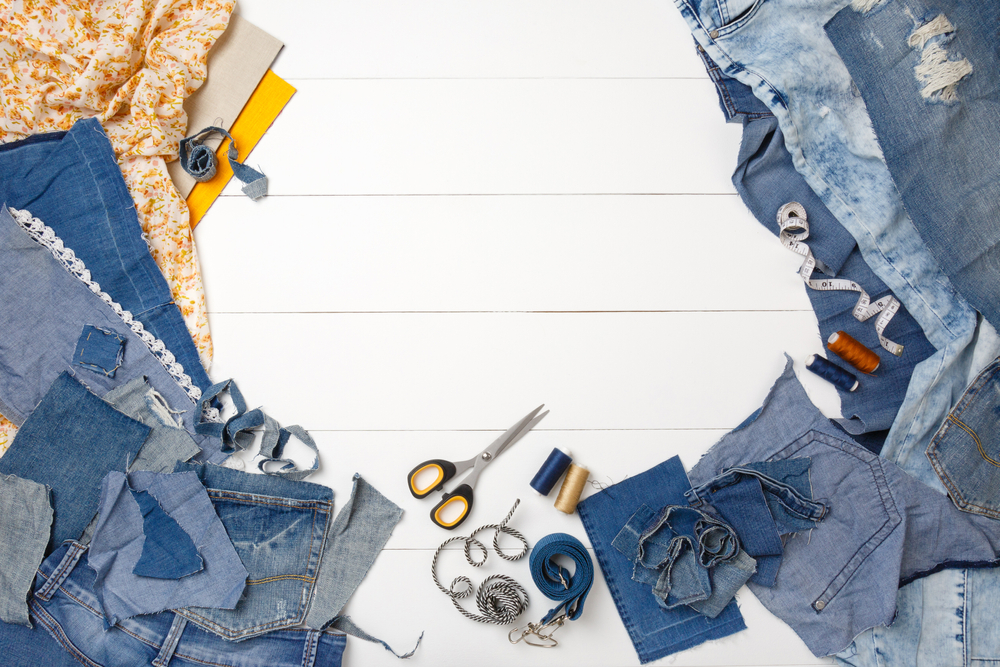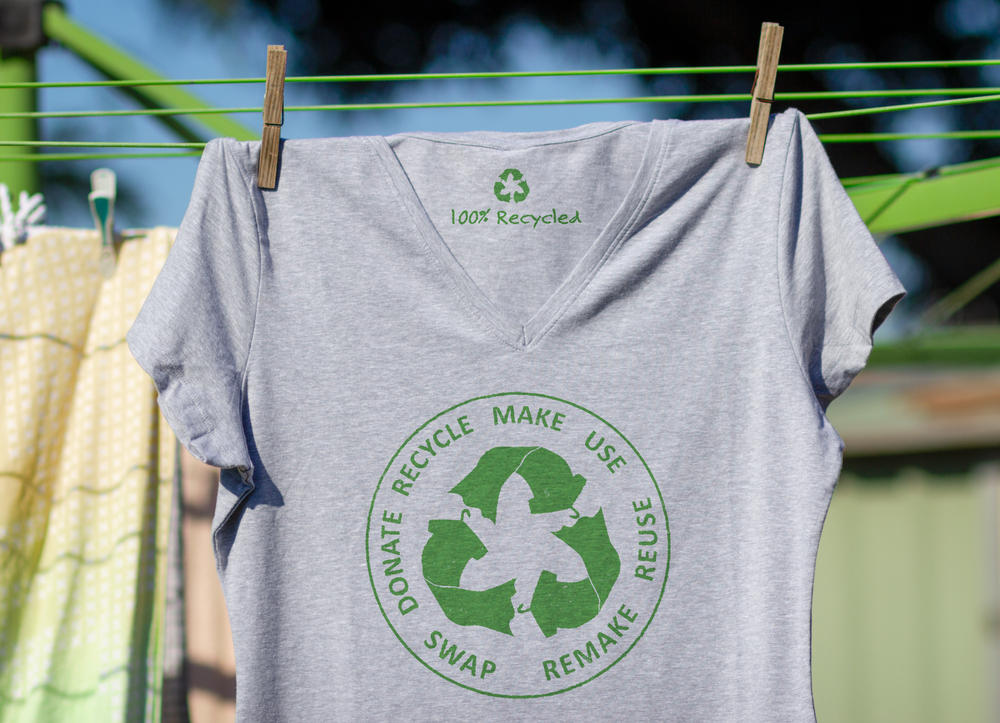Learning the 9 R's of Circularity



The textile and fashion industry is one of the largest industrial sectors, which uses a lot of resources and causes a lot of environmental problems. Hence, today, the emergence of the circular economy is a need rather than an alternative that would be good to adopt.
The circular fashion business is defined as a cycle of continuous improvement in which garments are circulated for as long as their highest value is kept, then judiciously released into the landfills when no longer in use. A circular economy in fashion aims to create a more sustainable and closed-loop system to extend the use time of garments and maintain the value of the products and materials as long as possible.
The fashion and textiles industry, as well as government leaders across the globe, are deeply focused on the circular economy concept as a means of minimising economic risks and negative environmental consequences.
Advantages of Circular Fashion Economy
The following are the four main advantages of circular fashion:
- Import dependency on natural resources is decreased.
- Ecologically responsible companies and jobs are promoted.
- Brands that are environmentally conscious have a superior image in the market.
- Environmental problems inflicted by resource extraction are lessened.
Enablers of Circular Economy
- Technology and Innovation - Material and technological development are crucial components in the shift from a linear to a circular economy. Agricultural waste, including banana fibres, pineapple fibres, and orange fibres, is now being used to create cellulose-based fibres. To minimise resource consumption in the manufacturing process, further technological innovation is necessary. Producers should use best practices in technological advancements that help to lessen their environmental impact.
- Efficient Reverse Logistics Processes - Many stakeholders, such as charities, commercial garbage collectors, social entrepreneurs, and municipalities, help in post-consumer clothes collection. Users might also be enticed to return their unwanted clothing by using incentive programs. Hence, the processes for scaling up clothes collections for better reuse and recycling are reducing the number of informal actors, offering incentives for returns, and effective communication on how and where to dispose.
- Awareness and Education - The educational system must facilitate the transformation to a circular economy. Traditional design education must be redesigned to incorporate the essential components of the circular economy. A strong sustainability focus on designer education might be a great tool to have a substantial influence.
- Policy Implementation - Undoubtedly, the government is the essential player that can expedite the transition to a circular economy, and this may be attained through good policy execution. To promote circularity, national policies involving material use, product design, manufacturing, distribution, consumption, and waste management are important. Governments can impose legislation allowing companies to choose suppliers based on their sustainability performance and promoting sustainable manufacturing methods.
- Enhancing Consumer Participation - Because of their increased understanding of sustainability issues, consumers are becoming more interested in moving towards a circular economy. However, sustainability alone is insufficient to influence consumer purchasing behaviour, as the price is frequently given precedence. Increasing consumer involvement in the circular economy by providing cost-saving gains is one approach to move forward.
Because of their increased understanding of sustainability issues, consumers are becoming more interested in moving towards a circular economy. However, sustainability alone is insufficient to influence consumer purchasing behaviour. Increasing consumer awareness about long-term benefits is required. Information about how to quickly find choices for extending the life of a product, such as repairing it at the point of sale, and exchange services should be passed on to the customer.
Challenges of Circular Fashion Based Economy

The three key challenges of circular fashion include:
- The low volume of textiles suitable for recycling remains to be one of the main challenges. Use of material blends, layering of different materials, presence of prints, chemicals, colours/dyes, harmful substances, etc., make recycling even more difficult.
- Sorting and recycling costs and transportation costs for textile waste are high. Furthermore, the incentives for investment in textile recycling are low. This high cost disincentivises upcycling process for several small and medium businesses.
- There is a lack of knowledge amongst brands about the collection and recycling aspects of textiles, as well as reverse logistics.
9 R’s of Circular Economy
The circular economy is governed by the 9Rs. These Rs define the major strategies to process textile and apparel in an eco-friendly way. Discover the 9R’s and the environmental change they can bring:
Refuse - Our consumption of clothing exceeds our demand. However, most of the clothes sit idle in the wardrobe. We can avoid this by refusing to have unnecessary and unsustainable products and encourage using solutions that maximise the usage of fewer goods. While shopping for apparel, refuse clothes that you will not be able to wear at least 30 times. Invest in pieces that can be worn through the seasons for many years and pick the clothes that you’re sure you will wear till they last.
Rethink - Every product and every system needs to be rethought with a focus on how to reduce its environmental impact. By investing in innovative projects and supporting rethinkers, we can move faster to an eco-driven society. Think of using the product more and more intensively by donating, sharing, and distributing.
Reduce - The fundamental idea of a circular economy is doing more with less. In order to achieve this, we need to embed the latest technologies in the manufacturing of apparel. Hemp, linen, bamboo, and ramie are a few examples of eco-friendly fibres. Brands need to prioritise the consumption of fewer natural resources and experiment with new-age eco-friendly fibres.
Reuse - Reusing your outfit can help you not only save the environment but also it will be lighter in your pocket. You can reuse your outfit by exchanging or swapping with friends or siblings. You can also consider purchasing clothes from thrift stores or consignment shops.
Repair - There is a natural tendency to dispose of ripped clothes or shoes instead of donating them. However, just a simple DIY can infuse a new life into the clothes. Buying new items appears to be easier than repairing old clothes. However, affordable repair options are also available in abundance in the market.
Refurbish - We all need to get over the habit of dumping clothing that is worn and torn. The art of restoring an old product to make it functional again while restoring its original look is called refurbishing. Enhancing the refurbishment of products can decrease the need for new materials, resulting in a reduction in waste and carbon emissions.
Remanufacture - Building a new product by using the good parts from discarded products is known as remanufacturing. It's high time for Earthians to develop the habit of using waste and create the best out of it. This will not only have positive externalities but also help brands use resources efficiently.
Repurpose - Repurposing a discarded product into a new one with a different function – is a growing trend. With repurposing, one can give a new life to discarded goods to regain their value and reduce their harmful effects on the environment.
Recycle - Textile recycling offers several environmental benefits, such as decreased landfill space considering synthetic fibres do not decompose and natural fibres may release greenhouse gases.
Steps That Companies Should Adopt
- Provide rental options such as subscription services and the ability to purchase rented items at a reduced price;
- Allow peer-to-peer transactions, such as resale and renting, and make it even better with logistical and digital solutions.
- Design timeless collections that reflect seasonality's diminishing influence;
- Share ideas on how to care for and repair damaged clothing;
- Facilitate return and recycling services;
- Create data strategies that would help companies make sustainably informed business decisions.

Conclusion
Clothes are a way for us to express ourselves on the outside. Therefore, the value of choice can not be disregarded. However, we should be more mindful about how many we absolutely need and also how they originate. A circular economy is an emerging phenomenon that will totally change the current system of fast fashion.
It can be summed up that the transformation towards circularity needs creativity, a new way of thinking and acting, new networks, large collaboration, and brave experimentation. The main aim of circular fashion is to ensure that the processing and consumption of products should not lead to socio-economic or environmental harm.
The fashion and textiles industry is a fast-growing complex system, and it urgently needs to take a planetary perspective.
If you want to inculcate the 9 Golden R’s of circularity in your business, reach out to Fashinza. We at Fashinza help clothing brands to manufacture their collections by connecting them with suppliers. We overlook the entire production process from design to delivery and get the clothes manufactured for you in a hassle-free, fast, and transparent manner.



















